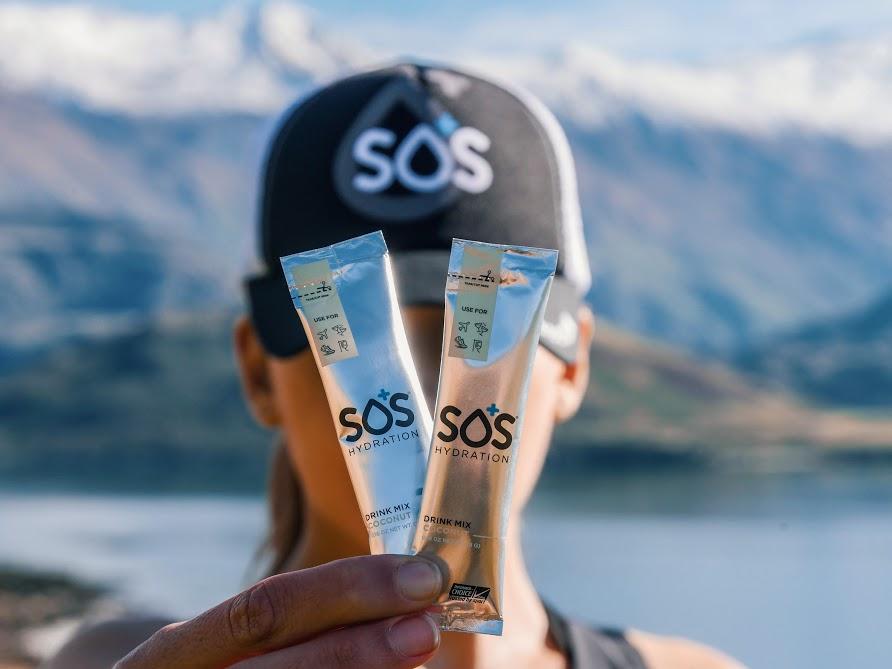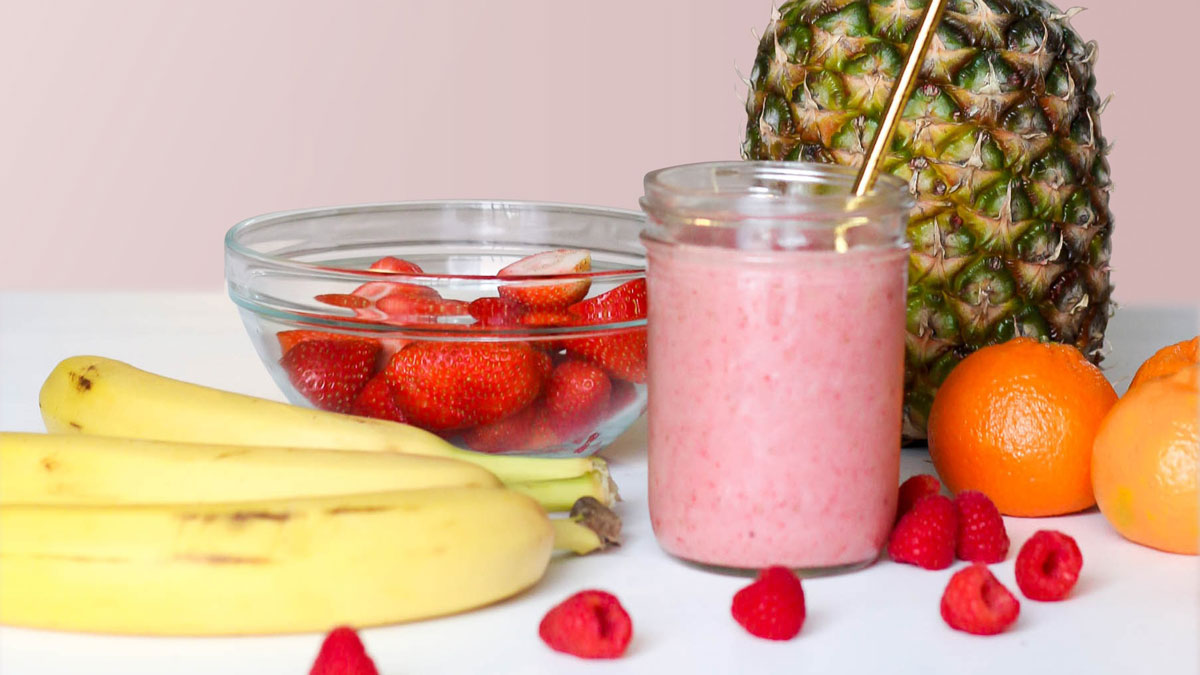Expert debunks myths, cites warning signs and offers science-based truths helping buyers beware bogus water & other rehydration/performance-focused beverage claims
It’s a brave new beverage world out there, and consumers are being romanced by a deluge of “healthy” drink solutions promising to keep them rehydrated, energized and performing at a high level. However, in truth, much of what’s being merchandised in this category is far more focused and adept at hype than hydration.
So, what’s a would-be consumer to do who’s thirsty for a truly viable rehydration, sports or performance-enhancing beverage solution, but doesn’t want to be duped by their drink of choice?
To answer this question and a plethora of other confusing issues rampant in the sports and rehydration drink industry, I connected with field expert James Mayo –co-founder of SOS Hydration, a company that’s developed a new, cutting-edge and healthy electrolyte replacement rehydration beverage engineered for those with active lifestyles. So impactful is his company’s solution, it proffers rehydration comparable to an I.V. drip to help people avoid and reverse mild to moderate dehydration.
Mayo doesn’t just talk the talk, he’s walked the walk…literally! As a former pro athlete of a caliber sponsored by a sports drink company, he still suffered dehydration and performance issues in relation. His brother, who is also a competitive athlete and with whom he co-founded the company, also suffered debilitating hydration—an actual collapse—that caused him to not make it onto a world championship team he’d set his sights on. This led the pair to begin formulating the most optimal, medical and science-driven formula on the market. Mayo’s military service in hot climates also factored into his passion for creating a best-in-class rehydration solution. Mayo personally experienced dehydration during deployments and saw other soldiers suffer the same. In fact, Mayo says dehydration is the number one non-combat casualty—a result of soldiers working in extreme climates at the edge of human performance, having to carry heavy gear and equipment and often marching for hours even before participating in actual combat. A recipe leaving soldiers exhausted and severely dehydrated, from Mayo’s first person accounts.
For those on the playing field, battle field or just seeking to improve their performance in their personal or professional lives, below are a few of Mayo’s myth-debunking “buyer beware” truths that’ll help shoppers steer clear of ineffective—or even harmful—rehydration and sports beverages in favor of those spurred by sound science.
- Sugar is not an electrolyte. Why pay extra money for excess sugar when what you really need are electrolytes. In truth, only a very small amount of sugar is required to help transport electrolytes and water into the cells as part of the sodium glucose co-transport system. In fact, this system is most effective when it utilizes one molecule of sugar and one molecule of sodium in combination, which helps create the fastest and most effective way to transport water into the cells for hydration. Even water rehydration and other drinks that do actually claim to utilize the sodium glucose co-transport system have been shown to contain excess sugar to enhance taste, apparently discounting the fact that that this added sugar commensurately increases calorie count and actually undermines cellular H2O absorption.
For clarity, sugar is a fuel and it’s a proven fact that it is not an electrolyte, so consumers seeking a maximized rehydration beverage should seek those with the minimum amount of sugar to help the body best absorb electrolytes and water. A glut of rehydration beverage brands on the market add excess sugar, don’t optimize the sodium-glucose co-transport system to make the drink sweeter, or both. - Excess sugar dehydrates and undermines energy. Beyond the above-stated concerns, too much sugar also leeches sodium and water from the body cells, which can cause dehydration. If there is excess sugar in a drink, even one engineered as a rehydration solution, then you can trigger reverse osmosis. The body’s reverse osmosis process occurs when there is an incorrect balance of sugar to sodium. Sodium always follows sugar and water always follows sodium. In a drink that is correctly balanced (utilizing the sodium glucose co-transport system) then the water and electrolytes optimally flow into the cells. In high sugar drinks there is too much sugar for the quantity of sodium and, as such, sodium and then water is actually leeched from the cells and passed out of the body as urine. This can lead to dehydration—the opposite effect for a rehydration beverage one has spent their hard-earned dollars to purchase.
Not to be underestimated, dehydration is a physical state that, at any level, can undermine performance and physical outlay by significant percent—and also cause other unpleasant symptoms like headaches and tiredness. Hydration delivered through a correctly calibrated rehydration beverage regulates the bodies’ electrolyte and water balance, allowing it to maintain optimum performance levels and avoid the energy drops associated with energy and sports drinks. - Zero sugar is a bad thing. Drinks that only contain sodium do not absorb H2O as fast as drinks that contain a small amount of sugar. As mentioned above, the sodium glucose co-transport system relies on a specific ration of one molecule of sugar and one molecule of sodium to transport electrolytes and water effectively into the cells. Drinks that do not contain any sugar then need to rely on collecting glucose (sugar) throughout their journey within the gut. The salt-only drink will eventually get absorbed, but much slower than one that is perfectly balanced.
Also, while it’s commendable that that major sports drinks manufacturers are finally attempting to tackle the excess sugar epidemic, but their “zero sugar” marketing strategy is creating other problems amid the sports and rehydration beverage category. Not the least of which is the fact that artificial sweeteners, then needed to make the beverage palatable, can contribute significantly to obesity—even more than plain sugar—coupled with the reality that zero sugar actually reduces the H2O absorption. - Tablet-based electrolyte drinks deliver sub-optimal results. Tablets dissolve via fizz or other breakdown method, leaving residue on the bottle in which it was inserted. That begs the question: what will it be doing to your body? Tablets are made from powder that has been fused together under pressure, requiring excess ingredients within them to activate the breakdown process when water is added. These added ingredients tend to be fizzy to create effervescence. As such, these tablets can lead to gastrointestinal distress that is directly correlated to the ingredients used in the tablet. So, with these, consumers are imbibing more than just the electrolytes they desire. Plus, users will also drink in some of those extra ingredients that leave a residue on the side of the bottle.
Moreover, tablets are often touted as being easily portable but, in reality, they tend to come in packs of 10 that need to be transported altogether rather than individually, per tablet. And, if any get wet while being carried, they all dissolve either partially or completely. In fact, in hot and humid environments these tablets frequently absorb atmospheric moisture and end up in ruin—money wasted.
Electrolyte drinks often miss the mark. There is a current trend around electrolyte waters. However, if you look at the ingredients, these kinds of beverages contain “trace” elements of said electrolytes. And, they tend to be the kind of electrolytes found naturally in some springs, or that have been added. Trace minerals means that they are barely measurable and, thus, do not provide enough in any quantity to be useful in the body by nutritional supplement standards. It’s also imperative to understand that drinking only water can a body to over-hydrate, flushing out the system and reducing the blood’s sodium concentration to dangerously low levels. This is called hyponatremia that, in extreme cases, can lead to death.
If you’re reading this narrative, you ostensibly care about what you put into your body and have an interest in gaining the positive effects of rehydration beverages, specifically. So why settle for drinking excess sugar, or beverages with artificial sweetness and flavors? The fewer and more natural ingredients you put into a drink, and in the correct ratios, the easier it will be for the body to absorb it … and give you the health and performance gains you desire. The same can be said for adding too many ingredients to make it an “all in one” drink. These kinds of beverage are fashionable and highly marketable, but simply put: your body will not absorb all of the ingredients. So, ultimately, you’re getting far less than you paid for. Having a drink that is wholly scientifically engineered for just one specific purpose, like optimizing cellular hydration, will have the best chance of being absorbed and rendering the myriad of benefits related thereto.
Beyond the body, food and beverage purveyors also need to do more to alleviate environmental concerns around the amount of beverage-born trash being disposed of that’s not only filling up our landfills, but also affecting the life and ecosystems in our oceans. Every plastic bottle that we use and regularly throw away takes over 450 years to break down. So, beverage and other manufacturers should not only be focused on “good for you” ingredients, but also eliminating single use plastics from the world through modern options like compostable or non-plastic packaging. Considering that some companies donate money to “green” causes but still manufacture and package in a way that exacerbates environmental issues is disingenuous, and just throwing money at the problem will only go so far. Industry collectively needs to take action and demand that manufacturers of food, beverage and all other products lead the change and do their true part to eliminate needlessly harmful waste.
To this, Mayo wholeheartedly agrees. As an environmental pioneer in the rehydration beverage category, Mayo says that SOS Rehydrate is committed to packaging that’s fully compostable across all retail channels by 2021. Come spring 2020 the company’s eCommerce Web site and select retailers will stock SOS’s compostable stick packs.
As the Executive Editor and Producer of “The Luxe List,” Merilee Kern is an internationally-regarded brand analyst, strategist and futurist. As a wellness industry veteran and health advocate, she’s also author of the award-winning, illustrated fictional children’s book, “Making Healthy Choices – A Story to Inspire Fit, Weight-Wise Kids” (Amazon). Merilee spotlights noteworthy industry innovators, change makers, movers and shakers: experts, brands, products, services, destinations and events. Connect with her at www.TheLuxeList.com / Instagram www.Instagram.com/LuxeListReports / Twitter www.Twitter.com/LuxeListReports / Facebook www.Facebook.com/LuxeListReports / LinkedIN www.LinkedIn.com/in/MerileeKern.
***Some or all of the accommodations(s), experience(s), item(s) and/or service(s) detailed above may have been provided at no cost or sponsored to accommodate this review, but all opinions expressed are entirely those of Merilee Kern and have not been influenced in any way.***
Sources:
https://www.mashed.com/135553/the-untold-truth-of-gatorade/
https://www.sciencedirect.com/science/article/pii/B9780323462150000203
https://sosrehydrate.com/pages/independent-trial














 Deering Estate
Deering Estate
 Massage Envy South Miami
Massage Envy South Miami
 Calla Blow Dry
Calla Blow Dry
 My Derma Clinic
My Derma Clinic
 Sushi Maki
Sushi Maki
 Sports Grill
Sports Grill
 The Healthy Kitchen
The Healthy Kitchen
 Golden Rule Seafood
Golden Rule Seafood
 Malanga Cuban Café
Malanga Cuban Café

 Kathleen Ballard
Kathleen Ballard
 Panter, Panter & Sampedro
Panter, Panter & Sampedro
 Vintage Liquors
Vintage Liquors
 The Dog from Ipanema
The Dog from Ipanema
 Rubinstein Family Chiropractic
Rubinstein Family Chiropractic
 Your Pet’s Best
Your Pet’s Best
 Indigo Republic
Indigo Republic




 ATR Luxury Homes
ATR Luxury Homes


 2112 Design Studio
2112 Design Studio
 Hamilton Fox & Company
Hamilton Fox & Company
 Creative Design Services
Creative Design Services
 Best Pest Professionals
Best Pest Professionals
 HD Tree Services
HD Tree Services
 Trinity Air Conditioning Company
Trinity Air Conditioning Company
 Cisca Construction & Development
Cisca Construction & Development
 Mosquito Joe
Mosquito Joe
 Cutler Bay Solar Solutions
Cutler Bay Solar Solutions


 Miami Royal Ballet & Dance
Miami Royal Ballet & Dance
 Christopher Columbus
Christopher Columbus
 Pineview Preschools
Pineview Preschools
 Westminster
Westminster
 Carrollton
Carrollton
 Lil’ Jungle
Lil’ Jungle
 Frost Science Museum
Frost Science Museum
 Palmer Trinity School
Palmer Trinity School
 South Florida Music
South Florida Music
 Pinecrest Orthodontics
Pinecrest Orthodontics
 Dr. Bob Pediatric Dentist
Dr. Bob Pediatric Dentist
 d.pediatrics
d.pediatrics
 South Miami Women’s Health
South Miami Women’s Health

 The Spot Barbershop
The Spot Barbershop
 My Derma Clinic
My Derma Clinic




 Miami Dance Project
Miami Dance Project

 Rubinstein Family Chiropractic
Rubinstein Family Chiropractic
 Indigo Republic
Indigo Republic

 Safes Universe
Safes Universe
 Vintage Liquors
Vintage Liquors
 Evenings Delight
Evenings Delight





 Atchana’s Homegrown Thai
Atchana’s Homegrown Thai
 Baptist Health South Florida
Baptist Health South Florida

 Laser Eye Center of Miami
Laser Eye Center of Miami
 Visiting Angels
Visiting Angels
 OpusCare of South Florida
OpusCare of South Florida

 Your Pet’s Best
Your Pet’s Best





 HD Tree Services
HD Tree Services
 Hamilton Fox & Company
Hamilton Fox & Company


 Creative Design Services
Creative Design Services